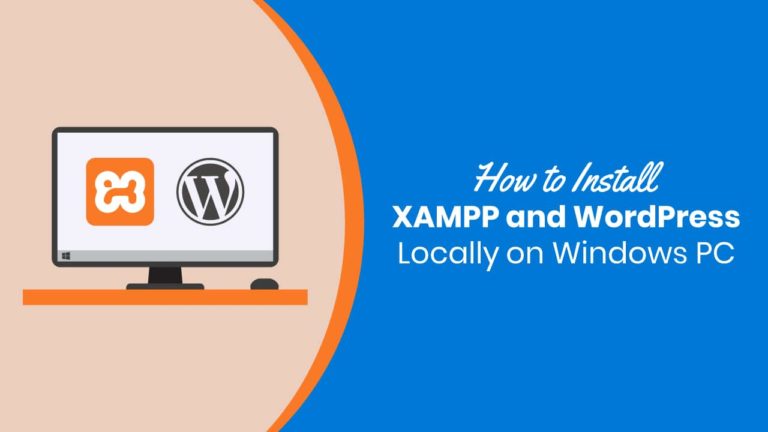Having a local installation of WordPress on your computer can be incredibly useful for website testing and development. WordPress developers and website owners frequently install WordPress locally on their computers to test new releases, themes, plugins, and code updates before using them in production.
In this article, I will show you how you can create a local WordPress environment using a free application called XAMPP.
Why Install WordPress Locally?
You may be wondering why anyone would go to the hassle of installing WordPress on their computer. After all, would it not be quicker to just install updates on your live website and save yourself time? Performing updates directly on your live WordPress website will indeed save you time initially, but as any experienced WordPress user will tell you, doing so is risky. There is always a chance that upgrading to a new version of WordPress, or updating a theme or plugin, will crash your website.
Here are the most frequent reasons why people are installing a local version of WordPress on their computer:
- Testing – A local WordPress installation allows you to safely test upgrades, tweaks, and other customizations.
- Website staging – Your local WordPress website can be used as a WordPress staging site. Once you have made the modifications you want, they can be pushed to your live website.
- Development – A local version of WordPress is the perfect environment to create and modify WordPress themes and plugins.
- Offline access – It can be useful to set up a test WordPress website online that can be accessed from anywhere; however a local installation of WordPress does not need an internet connection. Therefore, you can access your local installation if your connection goes down or if you are travelling and do not have access to the internet.
- Security & privacy – A local WordPress installation is only accessible to you on your computer. This is significantly more secure than a WordPress website that is installed online.
- Speed – Local WordPress installations run quicker than their online counterparts.
As you can see, there are many benefits to setting up a local WordPress installation. You will be glad to hear that setting one up is a relatively straightforward process.
Want to install XAMPP and WordPress – aka. install WordPress locally? This is a great idea if you want a development site that can be used for testing or other purposes. XAMPP lets you run a website from your very own computer. And once you get it set up, you can spin up a new WordPress install with just a few clicks.
But to actually install XAMPP and WordPress can be a little tricky, so you might need a helping hand.
We’ve already talked about some of the benefits of a local WordPress testing site, so I won’t belabor that point. Instead, I’m going to assume you’re just here for the guide.

So without further ado, here’s exactly how to install WordPress locally with XAMPP. At the end of this, you’ll have your very own local WordPress testing environment running on Windows.
Step 1: Download and install XAMPP on your computer
The first step on your way to install WordPress locally is to download and install the XAMPP software. You can download the Windows installer file from Apache Friends. It’s a big file, about 110 MB, so it might take a minute or so depending on your connection:
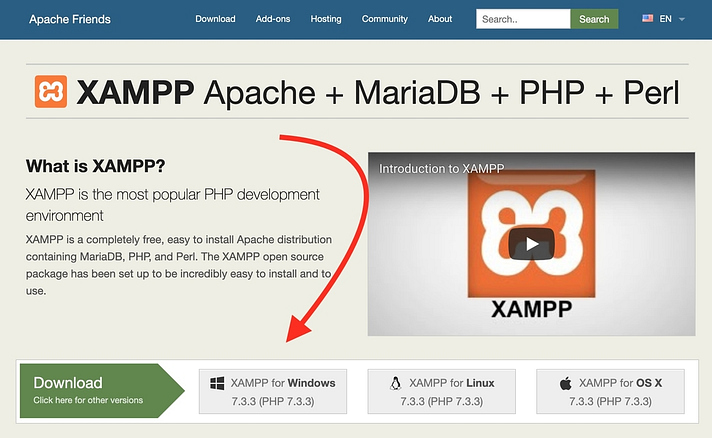
Once the download finishes, run the file you downloaded to launch the XAMPP installer. If you’re running antivirus software, you might get a warning like this:
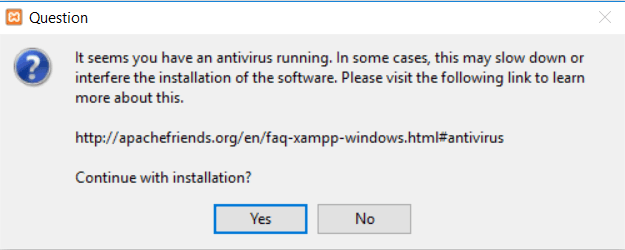
Just click Yes to continue. Depending on your Windows configuration, you might also get a prompt about User Account Control (UAC). Just continue through that prompt as well. Once you get through all of the prompts, you should see the standard installer screen:
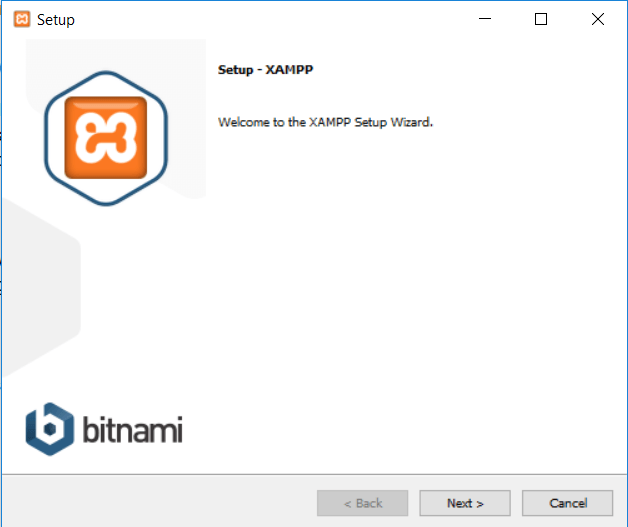
Just click Next to continue.
On the next screen, you can choose which components to install. To install XAMPP and WordPress, you do not need all of the components. In addition to the required components, all you need are:
- MySQL
- PHPMyAdmin
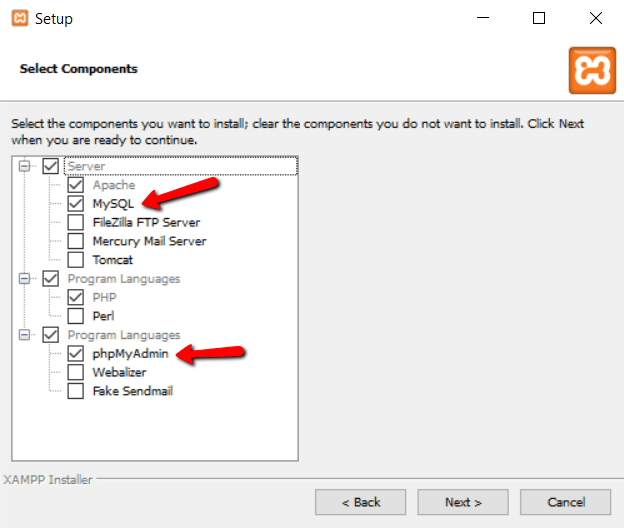
Again, this is all that’s needed to install WordPress locally. Uncheck everything else and click Next.
You can now select which folder to install XAMPP in. I always leave it as the default:
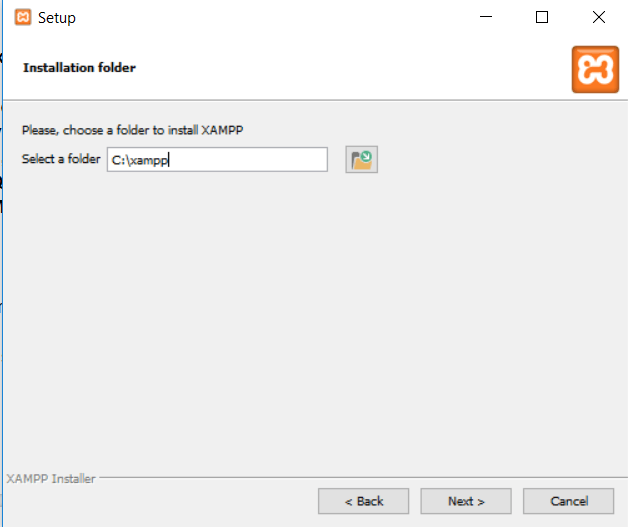
On the next screen, you’ll get a prompt asking you to install Bitnami for XAMPP. You do not need this to install XAMPP and WordPress, so just uncheck the box:
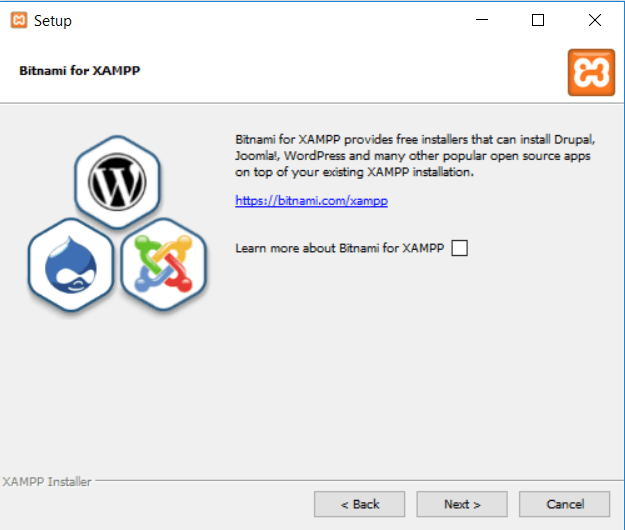
Once you click Next, you’re ready to run the install:
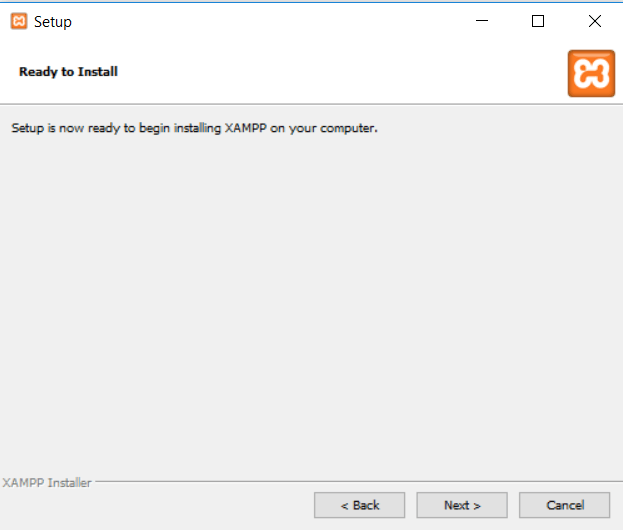
The install process might take a few minutes:
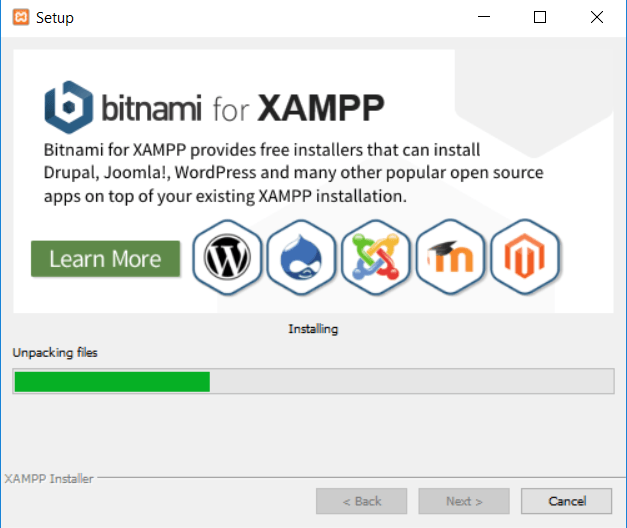
Once it finishes, you can launch the control panel to start working with XAMPP:
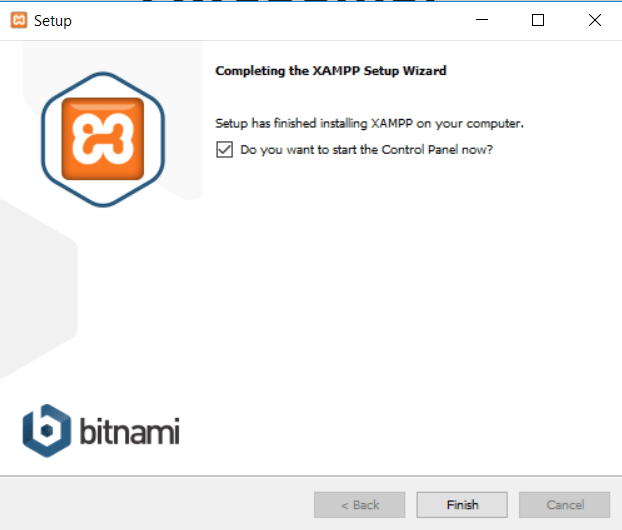
Step 2: Start the modules and test your server
To install XAMPP and WordPress properly, you’ll need to run two modules:
- Apache
- MySQL
You can start both modules from the XAMPP control panel:
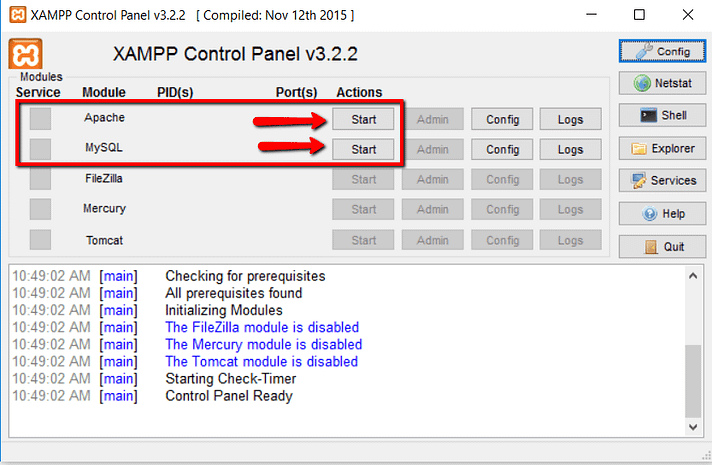
Once you launch them, you should see their status turn to green:
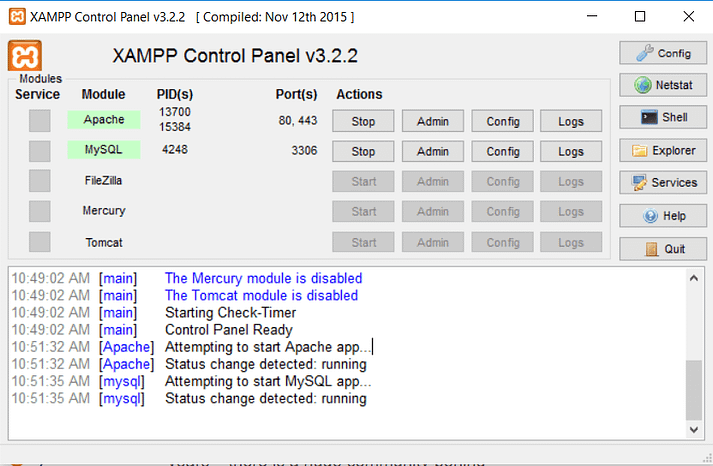
And now you should be able to test that your local server is working by going to http://localhost/ in your web browser of choice:
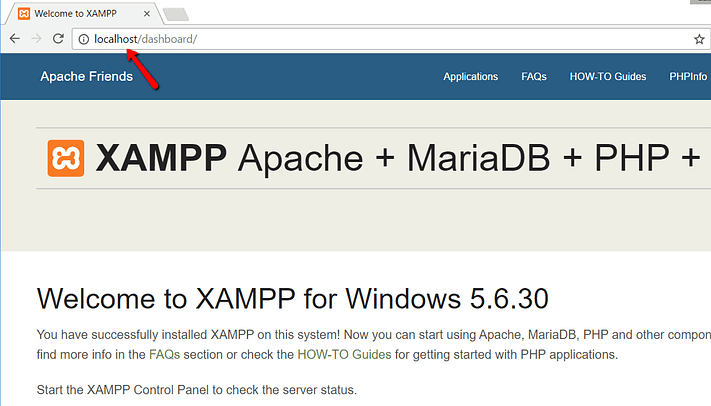
If all went well, you now have a functioning XAMPP server on your Windows PC! But now it’s time to install XAMPP and WordPress. So here’s how to get a WordPress site up and running on XAMPP.
Step 3: Add the WordPress files
If you’ve ever manually installed WordPress, the rest of the process should feel pretty familiar. First, you need to go to wordpress.org and download the latest version of WordPress.
Then, in Windows, navigate to the folder where you installed XAMPP. For me, that’s C://xampp. It should be something similar for you. Then, in that folder, find the htdocs subfolder:
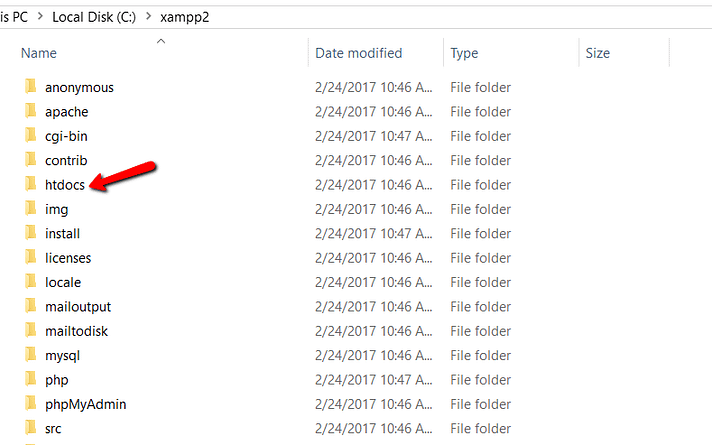
In htdocs, create a new folder for your test site. This folder name will become the sub-name used to access your site. For example, if you make the folder testsite, you’ll access your site by going to http://localhost/testsite.
Once you create the folder, extract the WordPress .zip file you downloaded from wordpress.org into it:
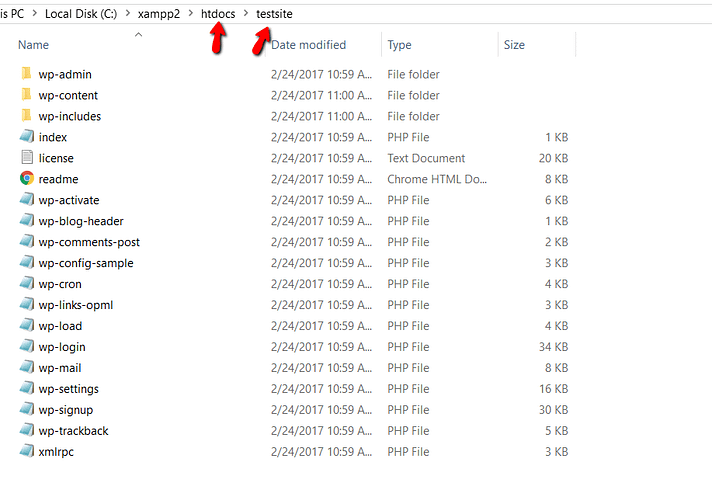
Step 4: Create a database for WordPress
Next, you need to create a MySQL database for your WordPress install. To do that, launch PHPMyAdmin from your XAMPP control panel:
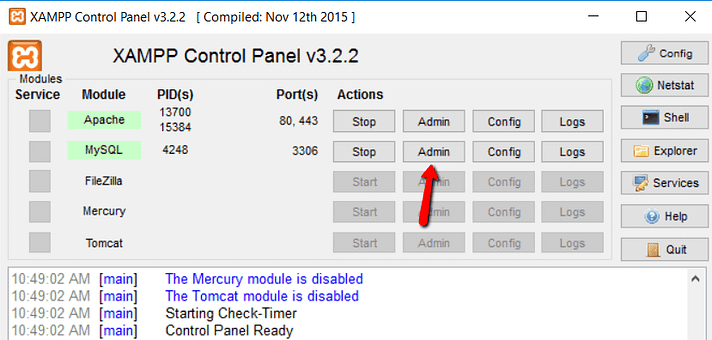
Then click on Databases at the top:
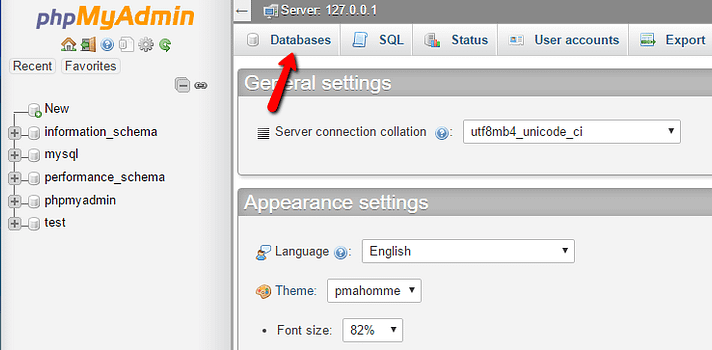
And enter a name for your database and click Create. Your name can be anything – just remember it because you’ll need it for the next step:
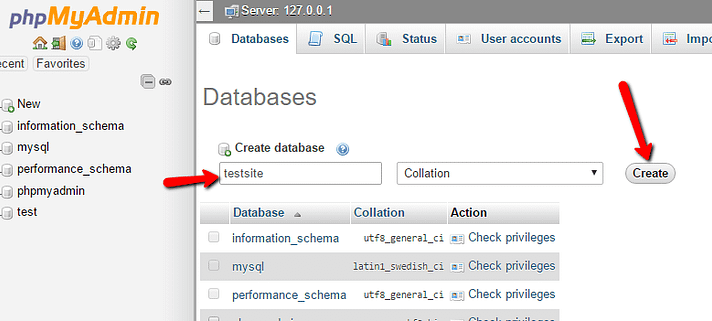
Unlike installing WordPress on a live web server, when you install XAMPP and WordPress, you don’t need to worry about creating a database user.
Step 5: Install WordPress locally via the on-screen installer
When you visit your test site, you should see the normal WordPress installer. Remember, your test site is just http://localhost/FOLDERNAME:
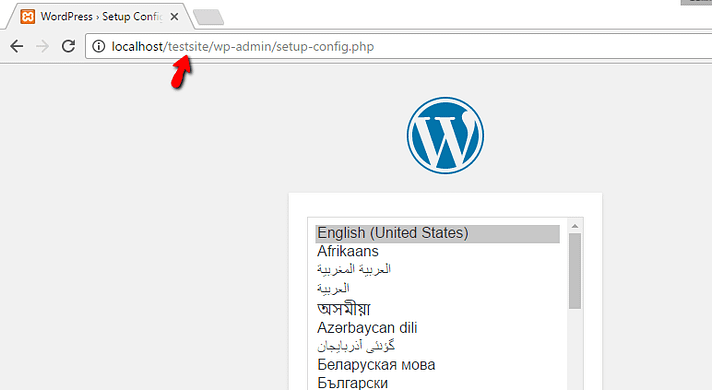
The only step where this process will differ from a normal install is the database details. When you get to the database details, enter them like this:
- Database Name = Name of the database you created in PHPMyAdmin
- Username = “root”
- Password = leave blank
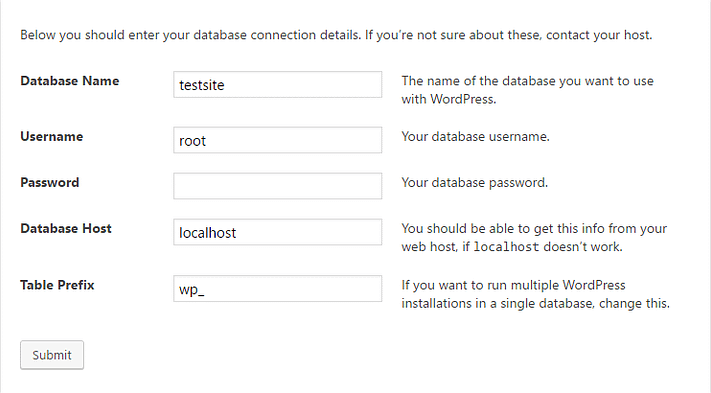
Then finish the rest of the WordPress install process like normal.
Once you complete the process, you should see your brand new WordPress install running perfectly on your local host:

What about Multisite or staging?
How to install XAMPP and WordPress Multisite
If you want to play around with WordPress Multisite, it’s also possible to configure WordPress Multisite to work on your local host. Rather than duplicating information, though, I’ll just direct you to Vishnu’s post on how to set up WordPress Multisite on a local host.
Should you use XAMPP and WordPress for staging?
While running WordPress on your localhost is a great way to experiment and try things with WordPress, you shouldn’t use it as an actual staging site for a live site.
That’s because it has a different hardware configuration than your live site. So just because something works or doesn’t work on your XAMPP WordPress install doesn’t mean it will be the same on your live production site.
Instead, using a subdomain or your host’s staging service are much better ways to create a WordPress staging site.
Wrapping things up on how to install WordPress locally on XAMPP
Once you learn how to install XAMPP and WordPress the first time, you can quickly spin up new testing sites whenever needed.
Share This Article:

